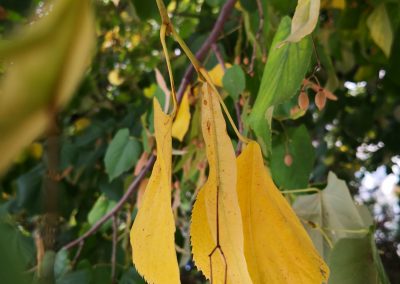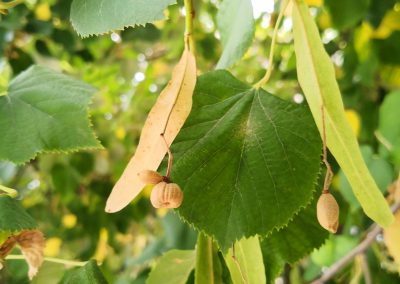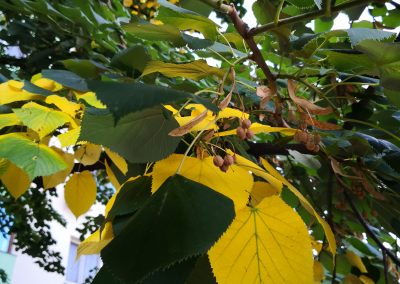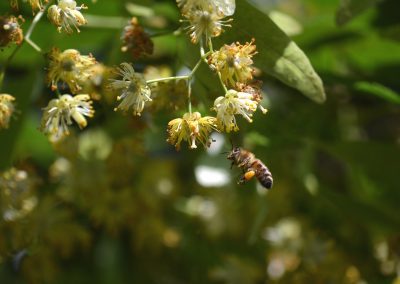In my first week in Sofia, my colleague had already pointed out the Linden tree to me. I was told that the Linden tree blossoms smelled really good in spring. It is easy to identify a Linden tree as the stems of the seeds are connected to the center of a leaf-like part. I have since found so many Linden trees in every town we visited in Bulgaria. When I saw the Linden honey on sale, I had to get some to taste it. The Linden honey is in a clear amber color and very flavorful.
The Linden tree is called ЛИПА (pronounced as “Lipa”) in Bulgarian, that’s easy to remember, when you think of the singer Dua Lipa. In the UK, the Linden tree might be called a Lime Tree, although it has nothing to do with limes. There are some Linden tree in the northern part of U.S., too, and I found this post to be very informative on how to identify a Linden tree and how to utilize the edible parts of a Linden tree. Amazingly, the list of the edible parts goes from flowers, young leaves, immature seeds and ripe seeds, to saps and barks, and some parts are said to be medicinal. Well, the American Linden’s seeds didn’t seem that successful in recipes and the blogger provided sources to say that the European Linden trees’ seeds could be made into chocolate or coffee. I doubt that I’d try these recipes, but it’s fun to know such things about the Linden trees. Mother Nature is truly the Provider.
As the fall comes in, some leaves on the Linden trees have turned yellow, that’s pretty. I can’t wait to see the foliage color change in the weeks to come.
Although I haven’t seen the blossoms, I’ve found some photos online to see that the flowers are exactly where the seeds are now, as it should be, and the blossoms are pretty. Hopefully we can visit Bulgaria again in the Linden blossom season some day.






Recent Comments